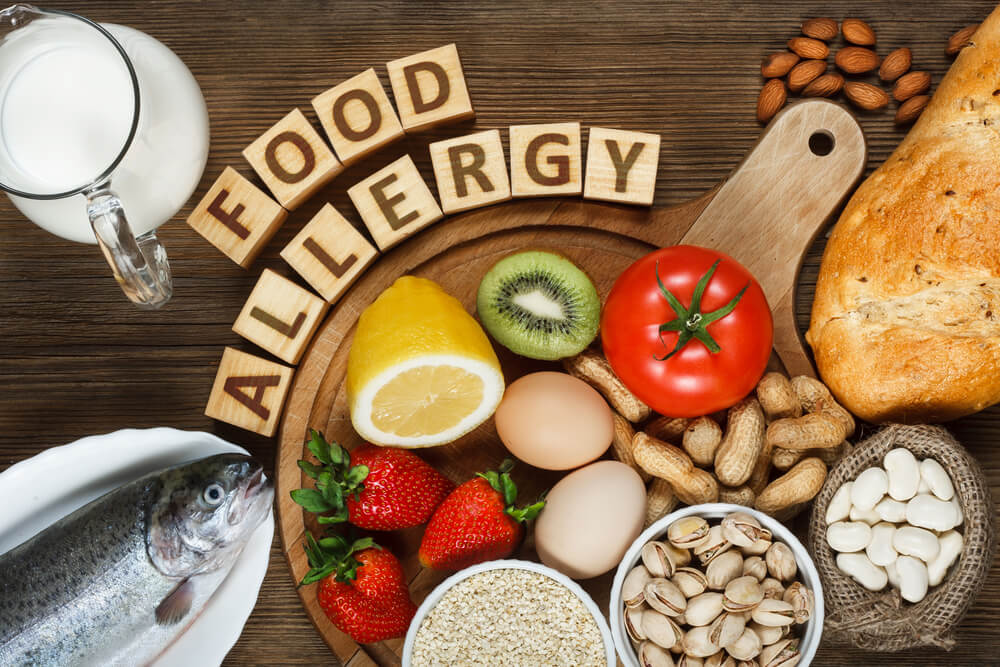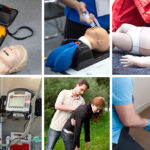Food allergies can be fatal. However, not all reactions to food allergies require a trip to the emergency room. Knowing when to dial 911 and when to use items from your house to treat a response could save your life and some money. An allergic reaction to food can become severe within minutes. Get assistance right away if you notice any of the following symptoms:
- breathing problem with wheezing
- high-pitched breathing
- difficulty in swallowing
- palpitations in the heart
- unconsciousness impaired speech
- chest pain or stiffness
- racing pulse
- slurred speech
- feeling unsteady or lightheaded
- stomach cramps
- diarrhea
American CPR Care Association’s online certification program for AED/CPR and First Aid for Allergy Emergencies includes AED instruction along with Adult, Child, and Infant CPR. When you pass the exam, you can print your wallet card immediately. Our video modules in this combo course are designed by OSHA-certified trainers and are easy to follow.
Food Allergy First Aid at Home
Sometimes a food allergy can be identified at the initial stages. Mild reactions like tingling in the mouth and lips, itchy skin, hives, or an upset stomach indicate a mild allergy. But some of these symptoms may also be the early signs of Anaphylaxis. Therefore it is always advisable to proceed with caution and give first aid to the victim. First aid for allergic reactions is beneficial to speed up the patient’s recovery. Knowing how to treat allergies appropriately at home can save the victim from dying and spare them from more serious side effects. Consider these Anaphylaxis first-aid measures to manage allergies at home:
- If you don’t have much experience in handling a victim of an allergic reaction, dial 9-1-1 right away.
- Don’t panic. Be calm with the patient.
- Look around your house for an epinephrine auto-injector or EpiPen.
- Allow them to breathe as normally as they can while lying on their back.
- Raise their feet 12 inches higher.
- Give them a blanket to use.
- If they are about to vomit or bleed, turn them sideward.
- For easier breathing, let their clothes hang loose.
Natural Allergy Relief Home Remedies
- As soon as you spot the signs of food allergy, stop eating or ask the victim not to continue eating the food that the body is reacting to. That’s all that should be done. Don’t consume more to “test” whether the food is causing the symptoms, and don’t ignore a little allergic reaction. When you are already experiencing a reaction, further exposures will simply exacerbate it.
- Over-the-counter antihistamines sold without a prescription may help ease the signs of a mild response. For instance, Benadryl might assist with itching and hives. However, if the hives appear suddenly, it’s a sign of anaphylaxis. Only an injection of epinephrine or EpiPen can stop anaphylaxis. No over-the-counter antihistamines can assist with this.
- Lemons are rich in vitamin C, a potent antioxidant that supports a healthy immune system and guards against illness and infection. In a study, it was discovered that using lemons regularly helped to alleviate severe allergic rhinitis symptoms like sneezing and watery eyes.
- Antioxidants included in green tea can help reduce inflammation. It may also prevent mast cell activation and obstruct histamines because of a flavonoid – Quercetin. It has an antihistamine effect and may assist in stabilizing the body’s histamine-releasing cells. Additional potential health advantages include cancer and heart disease prevention.
- Ginger has the quality of blocking histamine because of Claritin. Additionally, it strengthens your immune system. According to some researchers, ginger extract may be just as successful at treating allergic rhinitis patients’ nasal symptoms and quality of life.
Epinephrine for First-aid Management of Anaphylaxis
Within minutes, epinephrine can lessen the symptoms of anaphylaxis. If not, you might require a second dose within 30 minutes. These prescription-only shots are available as pre-filled, ready-to-use pens at pharmacies. Make sure your prescription is up to date because epinephrine loses its effectiveness after a year. In an emergency, you might receive additional epinephrine when medical staff arrives. To administer the medicine effectively, they might insert a tube down your nose or mouth if you can’t breathe. If this doesn’t work, they may perform a procedure known as a tracheostomy, in which the tube is placed straight into your windpipe.
Conclusion
As per Food Allergy Research & Education (FARE), approximately 15 million Americans suffer from food allergies, and the numbers are constantly growing. Both the occurrence and potential consequences of food allergies are concerning. Register with American CPR Care Association’s CPR / AED and First Aid courses on the website or call us at 1-888-277-7876 to prepare yourself to handle medical emergencies without panic.







